17 Southern Foods People Either Love Or Absolutely Refuse To Eat

The cuisine of the American South is as rich and diverse as its history, offering a tantalizing array of flavors and textures. However, not every dish holds universal appeal. Certain southern foods elicit strong reactions, either of adoration or aversion. From the creamy comfort of grits to the bold bite of pickled pig’s feet, these dishes are culinary icons that spark passionate debates at dinner tables across the region. In this exploration, we delve into 17 foods that you either love or absolutely refuse to eat, highlighting the unique tastes that define southern culinary tradition.
1. Grits

Grits evoke memories of warm Southern kitchens, where they’re often served as a comforting breakfast staple. Some adore their smooth texture and the subtle, buttery flavor that perfectly complements hearty dishes like shrimp or sausage. Yet, for those unfamiliar with this southern classic, grits can seem bland or texturally challenging.
Whether served plain or jazzed up with cheese and spices, grits represent a culinary blank canvas open to interpretation. To many, they are the epitome of Southern comfort food, while to others, they’re a puzzling porridge.
Their appeal often hinges on nostalgia and regional familiarity.
2. Chitlins (Chitterlings)
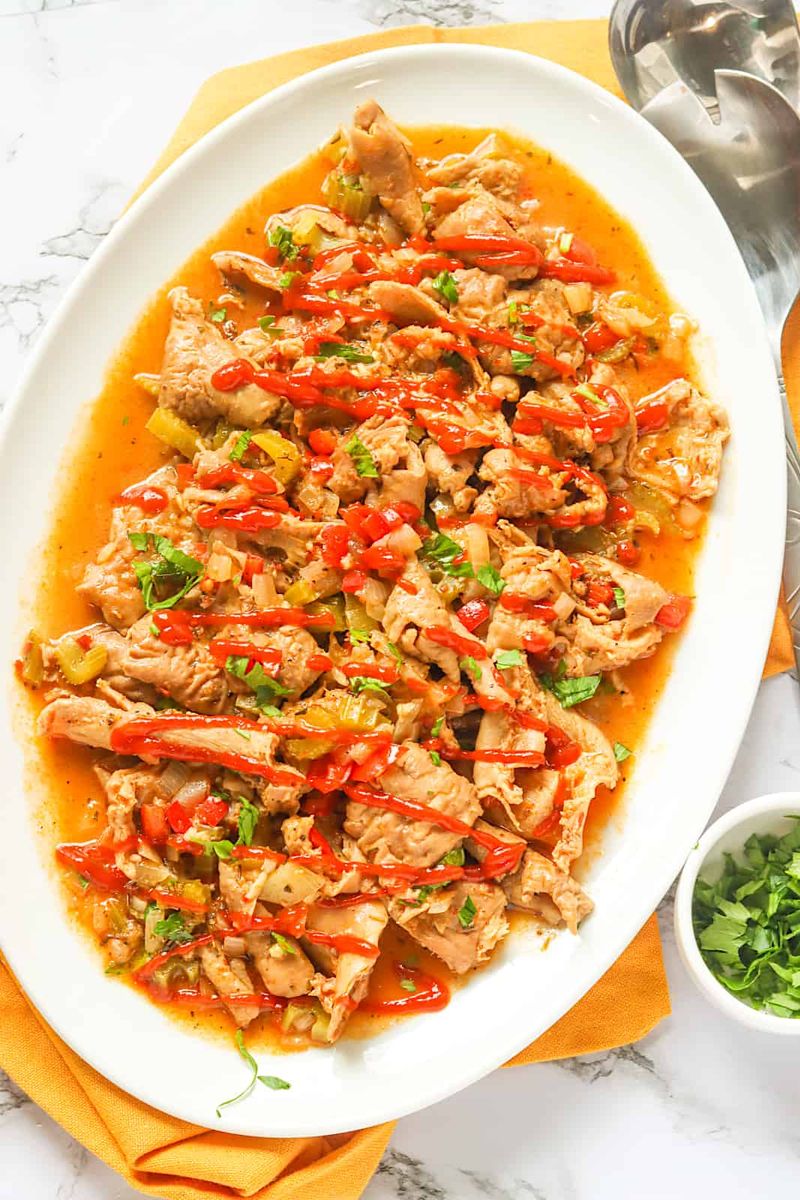
In the world of Southern cuisine, chitlins are an acquired taste. These pig intestines are meticulously cleaned and then slow-cooked, often with spices and vinegar, creating a robust aroma that can fill an entire house. For those who grew up with them, chitlins are a beloved delicacy, rich in flavor and tradition.
However, the pungent smell and chewy texture can be off-putting to newcomers. The preparation process alone, which requires thorough cleaning, can deter even the most curious eaters.
Chitlins are a testament to Southern resilience, turning humble ingredients into treasured dishes.
3. Boiled Peanuts

Boiled peanuts are the epitome of Southern snacking. Soft, salty, and earthy, these legumes are often sold at roadside stands or enjoyed during sporting events. For enthusiasts, they represent snack-time perfection—an addictive blend of flavors and textures.
Conversely, those unaccustomed to their soggy nature might consider them a peculiar, if not unappealing, snack. The concept of peanuts, typically roasted, being boiled instead, can be bewildering.
Yet for many, boiled peanuts are a nostalgic treat that embodies Southern hospitality and the region’s unique culinary heritage.
4. Livermush

A Carolina classic, livermush is both revered and reviled. Made from pig liver and cornmeal, it’s typically fried until crispy on the outside and served for breakfast. For locals, it’s a treasured dish that pairs perfectly with eggs and toast.
However, the idea of liver combined with mush can be off-putting to the uninitiated, who may find its dense texture and strong flavor hard to embrace.
Despite its divisive nature, livermush remains a staple in certain Southern communities, celebrated for its unique taste and historical roots.
5. Okra

Okra is a vegetable that divides the dining table. When fried to perfection, it offers a delightful crunch that many find irresistible. Its ability to enhance stews and gumbo gives it an essential role in Southern cuisine.
However, when cooked in less favorable ways, okra can become slimy—a texture that deters many. Its unique mucilage is a natural thickener but can be off-putting to those unfamiliar with its properties.
Love it or hate it, okra is a Southern staple, cherished for its versatility and nutritional value.
6. Pickled Pig’s Feet

Bold and briny, pickled pig’s feet are not for the faint-hearted. Immersed in vinegar, these delicacies are a testament to Southern ingenuity in using every part of the animal. For some, they offer a salty, chewy texture that’s uniquely satisfying.
For others, the idea of eating pig’s feet, let alone pickled ones, is a step too far. The strong pickling solution can be overpowering, and the chewy consistency isn’t to everyone’s liking.
Yet, for those who relish their unique taste, pickled pig’s feet are a cherished reminder of culinary traditions passed down through generations.
7. Ambrosia Salad

Ambrosia salad is a paradox of flavors and textures, often gracing Southern tables during holidays. With its mix of marshmallows, canned fruit, and whipped topping, it’s a dessert that sparks nostalgia for many. Its sweetness and creaminess offer a comforting end to any meal.
However, not everyone appreciates the combination, finding it overly sweet or oddly textured. The clash of fruit and fluff is a culinary oddity for those unfamiliar.
Regardless, ambrosia salad remains a beloved dessert for those who grew up with it, a blend of memories and taste.
8. Collard Greens

Collard greens are a Southern staple, embodying the essence of comfort food. When seasoned right and simmered with ham hocks, they deliver a rich, savory flavor that warms the soul. For many, they’re an essential part of Southern feasts, representing home and tradition.
However, if prepared poorly, collard greens can become soggy or bitter, deterring first-timers. The robust taste is not universally appreciated, requiring a palate accustomed to bold flavors.
Loved for their heartiness and nutritional benefits, collard greens hold a cherished place in Southern hearts and kitchens.
9. Pimento Cheese

Dubbed the “caviar of the South,” pimento cheese is a beloved spread made from cheese, pimentos, and mayonnaise or cream cheese. Its creamy, tangy taste is a delightful surprise for those who love bold flavors.
Yet, for some, pimento cheese is an oddity—unappealing and strange, like a cheese spread from another world. Its vibrant orange hue and chunky consistency may not win over the unfamiliar.
Despite its quirky nature, pimento cheese is cherished by many, often enjoyed on sandwiches or as a dip, embodying Southern comfort and hospitality.
10. Hog Head Cheese
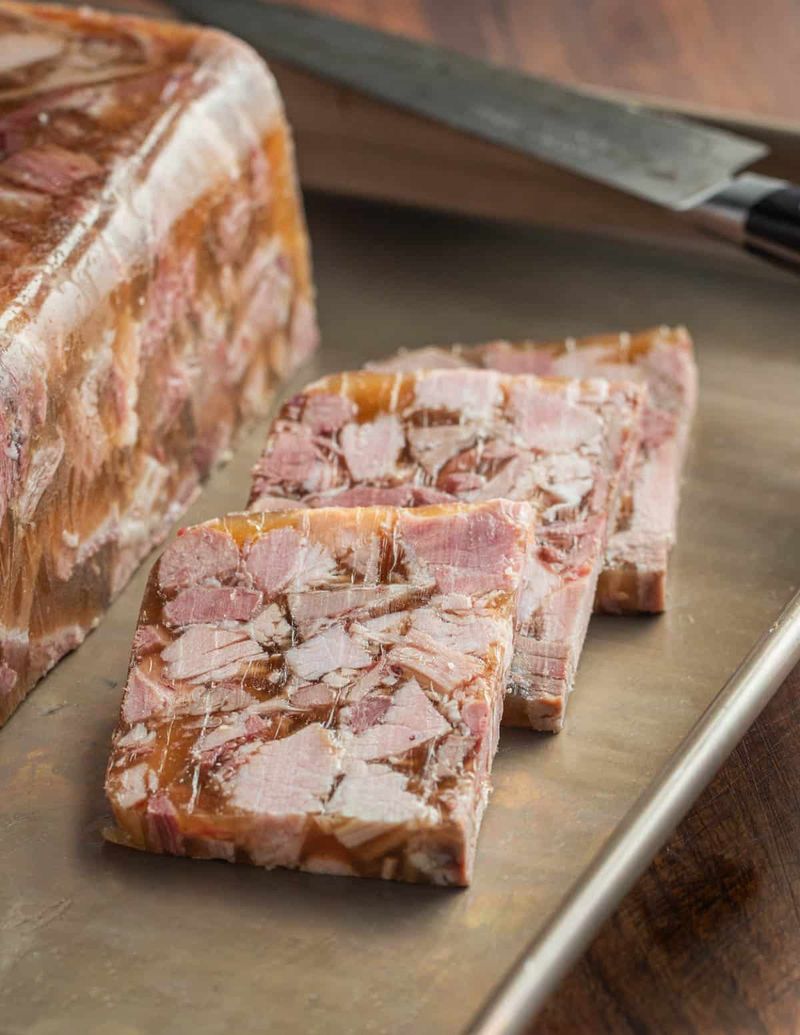
Hog head cheese, despite its name, contains no cheese. Instead, it’s a meat jelly made from parts of a pig’s head, seasoned and set into a loaf. For traditionalists, it’s a culinary delight, packed with rich flavors and a unique texture.
For others, the concept of eating head parts in gelatinous form is daunting, to say the least. The bold, savory taste can be overwhelming for some palates.
Yet, for those who cherish it, hog head cheese is a testament to Southern resourcefulness and a connection to culinary history.
11. Tomato Sandwiches (With Mayo)
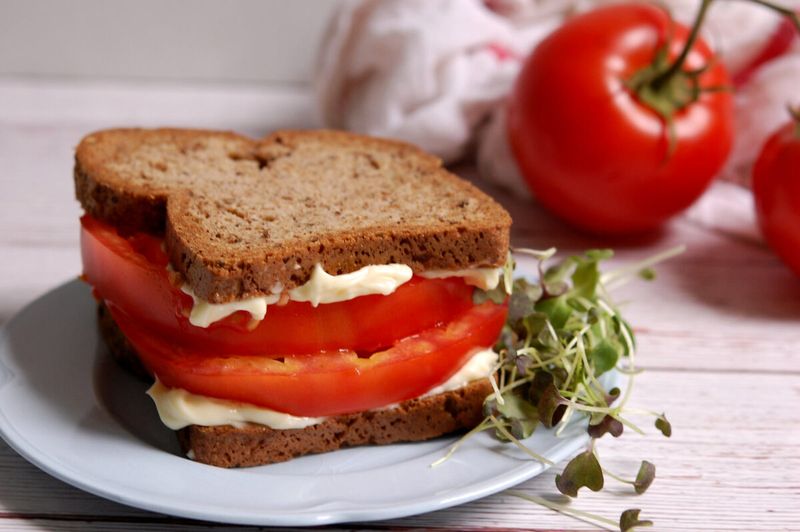
The Southern tomato sandwich is simplicity at its finest, yet it can be surprisingly contentious. A juicy, ripe tomato, soft white bread, and a generous smear of mayo create magic for some—a refreshing taste of summer.
For others, the combination seems unfathomable, with the idea of mayo on fruit raising eyebrows. The sandwich’s simplicity can be deceiving, as its flavor relies heavily on the quality of its ingredients.
Loved for their straightforward charm, tomato sandwiches are a Southern summer staple, embodying the essence of regional produce and tradition.
12. Chicken Gizzards
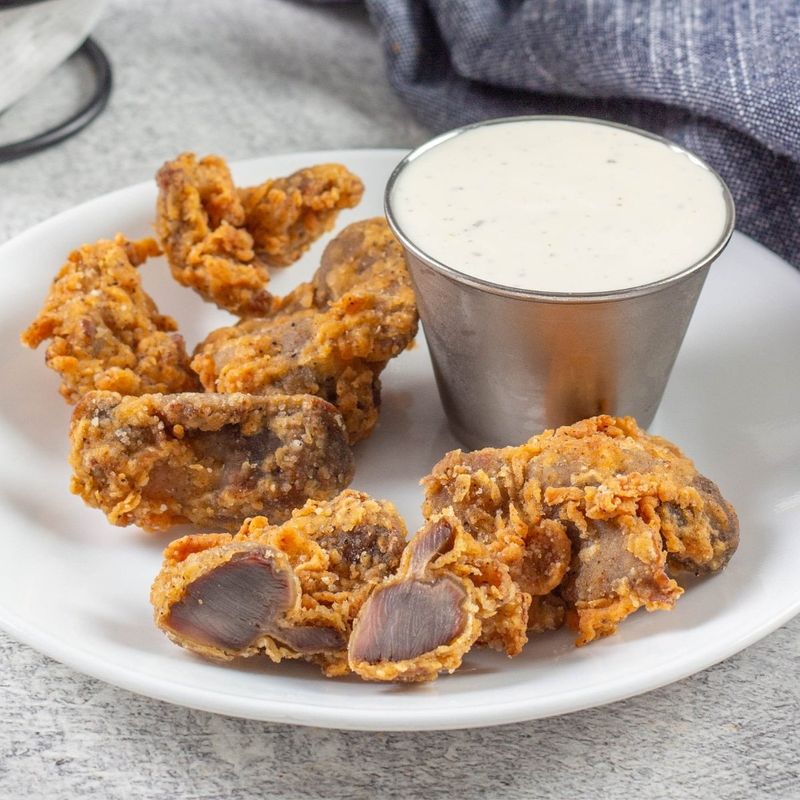
Chicken gizzards, often fried to a crispy perfection, are a Southern delicacy that divides opinion. For those in the know, they’re a savory treat with a satisfyingly chewy texture, perfect for snacking.
However, the thought of eating gizzards can be off-putting to some, who might mistake them for inedible leftovers. Their strong flavor and unique texture aren’t suitable for everyone.
Beloved by those who embrace their uniqueness, chicken gizzards are a testament to Southern cooking ingenuity, turning humble ingredients into treasured bites.
13. Fried Green Tomatoes
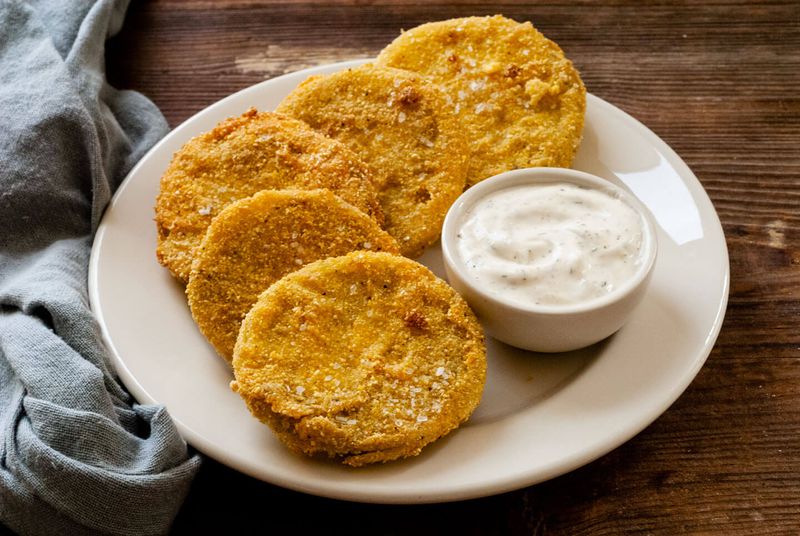
Fried green tomatoes are a Southern classic, their tartness and crunch making them a delightful appetizer. For many, they’re an addictive treat, transforming unripe fruit into crispy perfection.
Yet, not everyone is a fan. Some find the idea of eating unripe tomatoes strange or unnecessary, preferring them ripe and juicy. The concept can be jarring for those unfamiliar.
Despite differing tastes, fried green tomatoes remain a nostalgic favorite, showcasing the creativity and adaptability of Southern cuisine.
14. Souse (Pickled Meat Loaf)
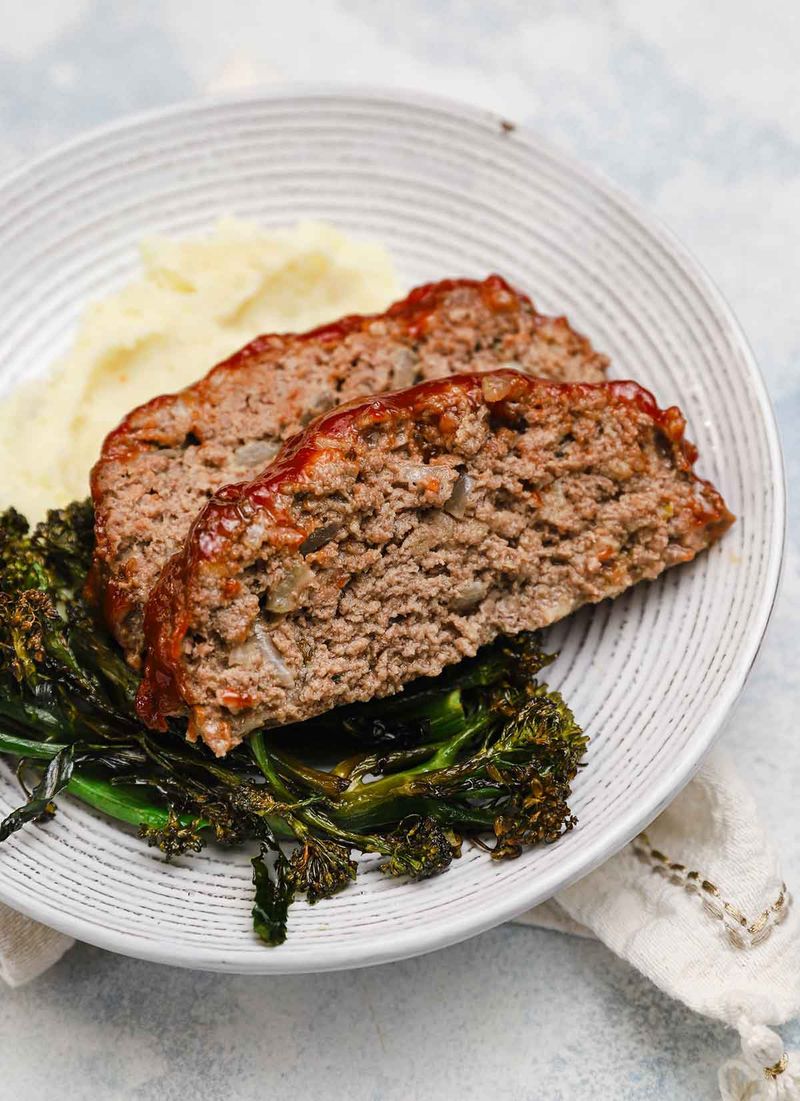
Souse, or pickled meat loaf, is a culinary curiosity. With its vinegary, gelatinous texture, it’s an old-school delicacy for some, offering a tangy bite of history.
For others, it’s an acquired taste that prompts a quick retreat. The combination of pickling and gelled meat is not for everyone, presenting a bold flavor that can overwhelm delicate palates.
Cherished by those who grew up with it, souse is a testament to Southern preservation techniques and a unique taste experience.
15. Banana Pudding with Nilla Wafers

Banana pudding with Nilla wafers is a sweet Southern tradition, often reserved for celebratory occasions. Its layers of creamy pudding, ripe bananas, and crispy wafers create a harmonious blend of textures and flavors.
For banana lovers, it’s pure delight, embodying the essence of Southern hospitality. Yet, for those wary of banana texture or flavor, it’s a dessert best avoided.
Despite differing opinions, this pudding remains a cherished staple at family gatherings, a sweet testament to the simplicity and joy of Southern desserts.
16. Turnip Greens

Turnip greens, like their collard cousins, bring a sharp, earthy flavor to the table. When cooked right, they offer a robust taste that warms the soul, often paired with cornbread or ham.
However, their strong taste can be overwhelming for some, particularly if not seasoned well. The bitterness and robustness require a seasoned palate to fully appreciate.
Loved for their hearty nature and nutritional value, turnip greens hold a special place in Southern cooking, representing resilience and resourcefulness.
17. Cornbread in Buttermilk (As a Drink)

Cornbread in buttermilk is not just a meal, it’s a Southern experience. Crumbled cornbread soaked in cold buttermilk and eaten with a spoon is a tradition for some, offering a simple, tangy refreshment.
To others, it’s culinary chaos, an unimaginable combination of bread and dairy. The texture and tang of buttermilk may not appeal to everyone, especially those unfamiliar with its rustic charm.
Yet, for those who savor it, this dish is a nostalgic nod to Southern ingenuity and simplicity, a testament to making the most of what’s on hand.
